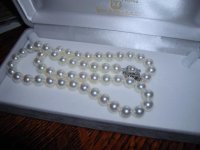Honey_and_Lemon
Community member
- Joined
- Apr 9, 2012
- Messages
- 34
Does anyone have experience with Yokota Pearls (http://www.yokota-pearl.co.jp/english/e-index.htm)?
They have a few ebay auctions up, for high dollar akoya strands and a website with some very nice Akoya strands up. They claim to be offering several grades of AA akoya, as well as necklaces priced at several layers above their Hanadama necklaces.
They have a few ebay auctions up, for high dollar akoya strands and a website with some very nice Akoya strands up. They claim to be offering several grades of AA akoya, as well as necklaces priced at several layers above their Hanadama necklaces.

